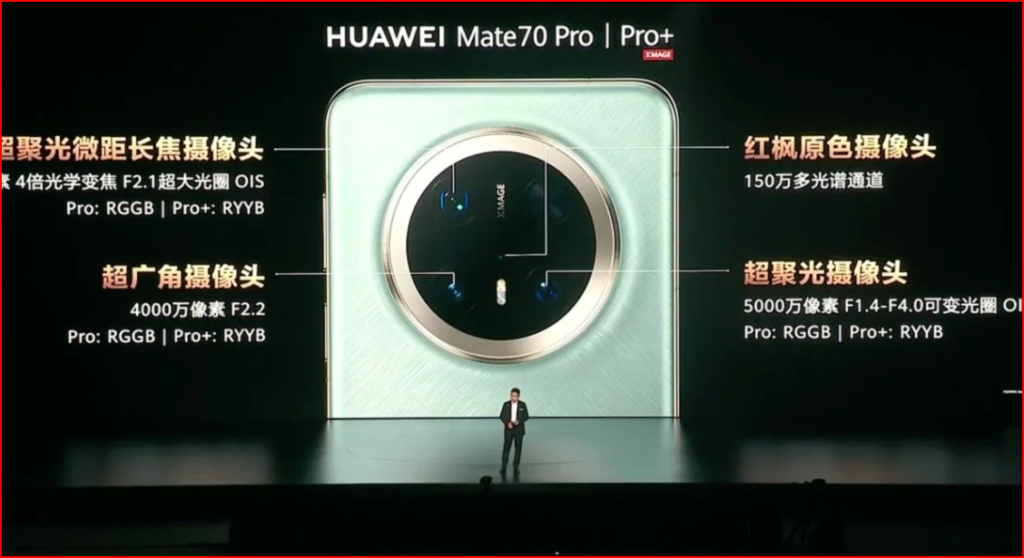A New Contender in the Smartphone OS Arena
Remember when choosing a smartphone meant making a straightforward decision: Apple’s iOS or Google’s Android? For years, these two giants have dominated the landscape, shaping the way we interact with our devices. But the tech world thrives on disruption, and now, a bold newcomer has stepped onto the stage—HarmonyOS Next, Huawei’s ambitious homegrown operating system.
This isn’t just another entry in the crowded tech market; it’s a statement. Huawei, one of China’s most prominent tech giants, is charting a new course, aiming to reshape the industry with its innovative OS. HarmonyOS Next is more than a response to global trade challenges or an alternative to Android—it’s a vision for a future where operating systems are more versatile, connected, and intuitive.

HarmonyOS Next: Redefining Connectivity and Challenging the Smartphone OS Duopoly
So, what makes HarmonyOS Next stand out? Its approach to cross-device integration is a game-changer, designed to seamlessly connect smartphones, tablets, smart TVs, wearables, and even IoT devices. Imagine controlling your entire smart ecosystem effortlessly, with every device communicating in perfect harmony (pun intended). Huawei promises an experience that’s not just about functionality but about transforming how we interact with technology in our daily lives.
But the question remains: can HarmonyOS Next truly challenge the entrenched dominance of iOS and Android? Breaking into this duopoly is no small feat. It’s about more than just features—it’s about winning over users, developers, and a global market that’s accustomed to the status quo. With its unique design philosophy and ambitious features, Huawei is positioning HarmonyOS Next as not just an alternative, but as a contender capable of reshaping the rules of the game.
As we dive deeper into the world of HarmonyOS Next, we’ll explore its key innovations, its potential impact on the global tech ecosystem, and what it means for you, the end user. Could this be the dawn of a new era in smartphone operating systems? The stage is set, and the competition has never been more exciting. Let’s find out if HarmonyOS Next has what it takes to revolutionize the industry and redefine the future of mobile technology.
A Bold Move Born from Necessity
Huawei’s journey to HarmonyOS Next wasn’t entirely by choice. U.S. sanctions in 2019 dealt a significant blow to the company, restricting its access to vital components and Google Mobile Services, including the all-important app store. This spurred Huawei to accelerate the development of its own OS and forge a path towards technological self-sufficiency.
This determination to overcome adversity is a testament to Huawei’s resilience. Think of it like a skilled climber facing a challenging rock face. Instead of giving up, they adapt, find new footholds, and push forward, ultimately reaching the summit.
HarmonyOS Next: More Than Just a Name Change
While previous versions of HarmonyOS relied on Android’s open-source code, HarmonyOS Next marks a clean break from Western technology. It’s built entirely with native components, making it a “pure-blooded” system, as described by Chinese media. This signifies a major step towards China’s ambition of technological independence.

The Allure of the “Made in China” Label
The launch of the Mate 70 series, powered by HarmonyOS Next, has been met with enthusiasm in China. Over three million pre-orders for the Mate 70 demonstrate the strong interest in Huawei’s latest offering. This excitement isn’t just about shiny new tech; it’s also fueled by a sense of national pride. Supporting domestic products is a powerful motivator, as evidenced by the sentiments of Zhang Nannan, a Huawei user who switched from Apple.
Imagine a local bakery suddenly becoming a national sensation, winning awards and rivaling international brands. The sense of community pride would be palpable, with people eager to support their hometown success story. That’s a bit like what’s happening with Huawei in China.
The App Gap: A Challenge to Overcome
The biggest hurdle facing HarmonyOS Next is the app gap. With millions of apps available on Android, users are accustomed to having a vast selection at their fingertips. Convincing developers to create apps for HarmonyOS Next is crucial for its success. It’s like opening a new shopping mall with amazing infrastructure but very few stores. Shoppers might be initially impressed, but they’ll eventually go elsewhere if they can’t find what they need.
Huawei acknowledges this challenge and is actively working to build a thriving app ecosystem. The company has launched OpenHarmony, an open-source version of its OS, to encourage developers to create compatible apps. This is akin to providing construction blueprints and incentives to attract store owners to set up shop in that new mall.
The Price of Innovation: A Hefty Development Cost
Developing apps for a new platform requires time, effort, and resources. One third-party agency in China quoted a staggering $275,500 to adapt a foreign app for HarmonyOS Next. This high cost could deter developers, especially smaller ones, from investing in the platform.
To entice developers, Huawei needs to offer compelling reasons to choose HarmonyOS Next. This includes providing comprehensive developer support, attractive revenue-sharing models, and demonstrating a long-term commitment to the platform’s growth1718. Think of it as offering favorable lease terms and marketing support to those store owners, making it more appealing to open a shop in that new mall.
The Future of HarmonyOS Next: A Waiting Game
Whether HarmonyOS Next can succeed on a global scale remains to be seen. Its fate depends on several factors:
Attracting a Robust App Ecosystem: The availability of popular and essential apps is crucial for user adoption.
Competitive Hardware: Huawei needs to continue delivering innovative and high-performing devices to entice users to switch from established brands.
Overcoming Security Concerns: Addressing any potential security concerns and building trust with users outside of China is paramount.
The Stakes Are High
Huawei’s ambition with HarmonyOS Next goes beyond just smartphones. The company envisions using the OS across its entire product ecosystem, including laptops, smart TVs, and even cars19. This “seamless integration” approach could be a key differentiator for Huawei.
The success of HarmonyOS Next could have significant implications:
China’s Technological Independence: It could demonstrate China’s ability to create a viable alternative to Western operating systems.
Increased Competition: A successful third player in the OS market could lead to greater innovation and benefit consumers with more choices.
Geopolitical Impact: The development of a strong Chinese OS could shift the balance of power in the global tech landscape.
What Do You Think?
Huawei’s bold foray into the smartphone OS world with HarmonyOS Next is a move that’s making waves—and for good reason. With its unique approach to cross-device integration and its promise of a seamlessly connected smart ecosystem, HarmonyOS Next aims to transform the way we interact with technology on a daily basis. But the question remains: can this ambitious new OS truly challenge the established dominance of Android and iOS?
The smartphone industry has been firmly in the grip of Google and Apple for over a decade. Their ecosystems are deeply embedded in the way we live, work, and play. Breaking into this duopoly is no small feat, and Huawei’s HarmonyOS Next has a tall order ahead. But with its innovative design, features like inter-device communication, and the potential to unify everything from smartphones to wearables to smart home devices, it’s clear that HarmonyOS Next is not just another “me-too” operating system.
But what do YOU think? Could this be the spark that finally disrupts the smartphone landscape, offering users an exciting new alternative to the status quo? Or is it just another ambitious attempt that will struggle to win over the masses? Do you believe that HarmonyOS Next can go beyond features and convince developers, users, and global markets to make the switch?
We want to hear your thoughts! Will Huawei’s bold gamble pay off, or will it be another chapter in the long story of failed challengers? Drop your thoughts, predictions, and opinions in the comments below, and let’s start a conversation about what could be the future of smartphone operating systems. The possibilities are endless—let’s explore them together!

